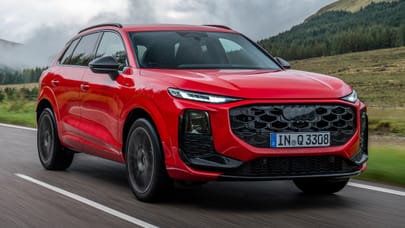
12 things we learned about the new Jaguar I-Pace
Jag's all-new electric SUV was the star of LA. Here's what you need to know

It’s that rare thing in the automotive world: all-new

The I-Pace is not a platform derivative, it’s a car fully optimised to exploit an EV architecture. JLR lured Dr Wolfgang Ziebart, a former BMW board member and JLR engineering director, out of retirement to oversee the programme. "We agreed very quickly that I would be working on an electric car," he says, a little enigmatically. "In terms of well-to-wheel efficiency, the EV is about 70 per cent." (He’s no hydrogen fuel cell fan: its overall efficiency, he insists, is about 30 per cent)
Advertisement - Page continues belowIt should handle like a Jaguar

Jaguar’s engineers were obsessed with getting the centre of gravity as low as possible: the I-Pace's is 120mm lower than the F-Pace’s. The frame that fits around the batteries also houses the cooling system, and has been designed to contribute to the vehicle’s overall torsional stiffness (it’s approximately 34 kilo-newton metres per degree). By reducing the centre of gravity, Jag’s guys weren’t fighting lots of body roll, which meant they could put the stiffness where they wanted it to be, without it becoming overly harsh. "I’m not worried at all, when it comes to tuning the car’s dynamics," JLR CEO Dr Ralf Speth says. "You’ve met Mike Cross, haven’t you?"
It should ride like one, too

The I-Pace uses double wishbones upfront and the integral link set-up at the rear, which Jaguar is now very confident about tuning. Reckon on a 250kg extra mass for a battery car versus an equivalent ICE diesel vehicle. But if you get the mass in the right place, it can work in the car’s favour, not against it.
Advertisement - Page continues belowAnd go like one, for that matter...

The electric motors obviously deliver all their torque from zero. But, says vehicle line director Ian Hoban, "it’s what it does at 50 or 60mph on our handling track that’s amazing. It will be quick, and it will feel quick. And it turns-in beautifully."
The I-Pace is just the start of Jaguar’s all-electric adventure

The full battery pack – the modules, the cooling system, the structure – weighs between 550 and 600kg. The I-Pace’s batteries are among the most energy dense, in terms of kW per kg, currently available. The pouch cells are also in the early phase of their development, so there’s more energy density to come and lots of potential. No-one’s talking about an I-Pace SVR just yet, but there’s certainly more to come from the batteries...
The I-Pace doesn’t get hot under the collar

Temperature is the battery engineer’s big challenge: warming them up or cooling them down. But Jaguar says that you can fire a higher current – a higher load, for higher performance – through the I-Pace’s batteries for longer without generating the sort of heat you would normally expect.
Range anxiety is dead, but it’s OK to still worry about the infrastructure

Charging time and charging infrastructure is the variable that now needs to be fixed, says Jaguar. Jag expects most of the I-Pace’s customers to have a 7kW wall box already installed, but a 50kW DC rapid charging point is likely to be the fastest charging medium by 2018 (that can charge up 80 per cent of the battery in 30 minutes depending on the battery in question). JLR is being cautious about this, because the car will be on sale within 18 months. But systems that can charge at 100kW already exist, so charging quickly isn’t likely to be a problem.
Advertisement - Page continues belowNo such thing as a free lunch, but...

The I-Pace has a heat scavenger at the front of the car, so even in sub-zero conditions, it can scavenge temperature and get it back into the batteries. For every kilowatt it uses to do that, it can get 2.5kW of thermal energy into the batteries.
Forget the F-Type. Or the XJ

Jaguar expects this car to become central to the brand – possibly even the definitive Jaguar. It’s also going to get to market before their main rivals (just don’t mention Tesla, eh). A lot of energy has been expended on making every aspect of the car’s systems – the EDU, the structure that houses the battery, the integration – fully scaleable. In other words, expect various other Jaguar and Land Rover pure EVs before long.
Advertisement - Page continues belowThe I-Pace is just the start of the revolution

The engineering is signed off – it was done virtually. Mechanical prototypes are now being evaluated. Emphasis will also be put on how Jaguar sells the car, and the readiness of its dealers to do so. The I-Pace will not be launched in the same way as a conventional car.
It won’t drive itself any time soon

"Autonomous technology is not mature yet," Dr Speth insists.
It was inspired by David Bowie

During the I-Pace's dazzling virtual reality launch in LA, the participants found themselves floating above the planet. Turns out that 1975 sci-fi movie classic The Man Who Fell To Earth, in which the late, great David Bowie played an alien stranded on Earth, was an influence on the whole I-Pace programme. "I wanted to call it the 'car that fell to Earth'," Jaguar design director - and huge Bowie fan - Ian Callum told TG.com. "I certainly wanted to get that sort of feel into it."
Trending this week
- Car Review
BMW iX3







